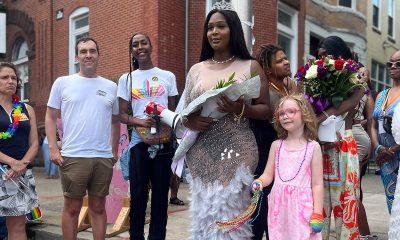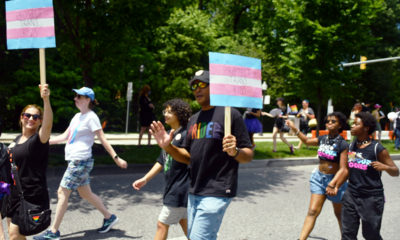Maryland
Turning around sex trafficking: One year after Safe Harbor in Maryland
TurnAround Inc. working to rescue youth, trans girls from exploitation
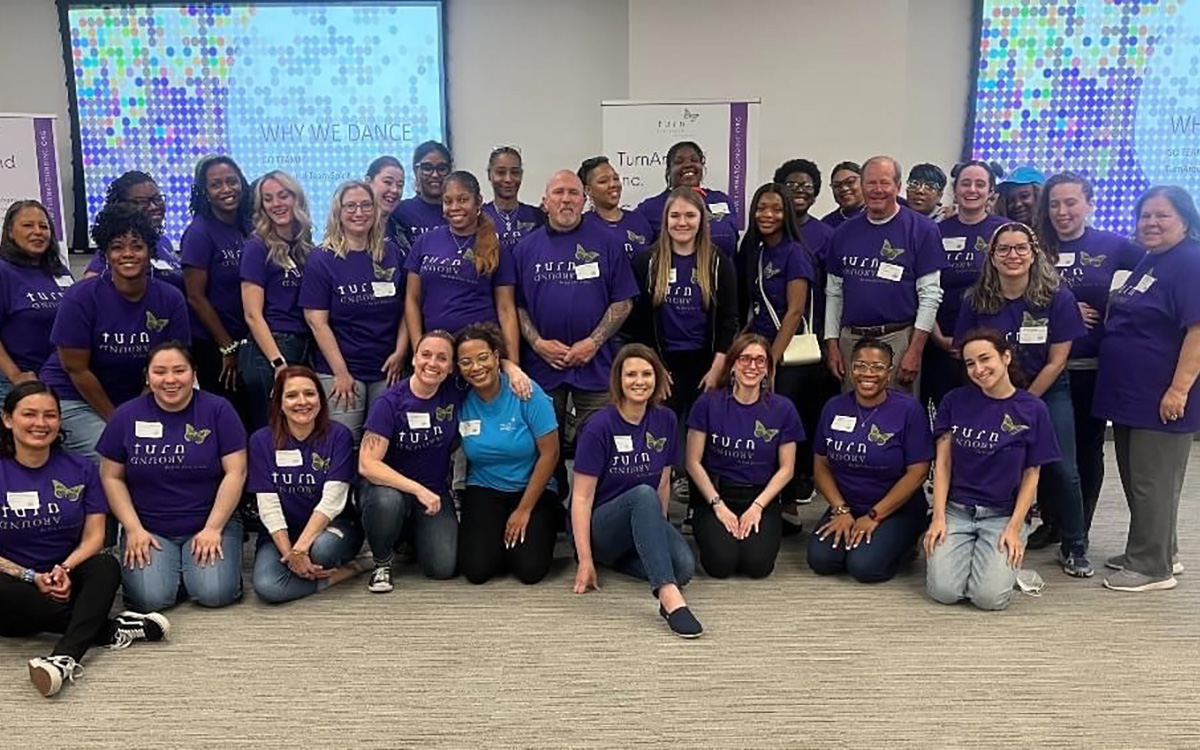
In 2023, the law in Maryland dictated the following: If a child was discovered to be sex trafficked during a sting operation, they were to be arrested, handcuffed, and then incarcerated as a “child prostitute.” One survivor testified to Maryland lawmakers that after being trafficked throughout College Park from ages 12 to 15, it was their ‘rescue’ by law enforcement that was the most traumatizing part of their experience.
In 40 states and in federal law, the sex trafficking of minors was already understood to be a crime committed against children, and not a crime committed by children. When Gov. Wes Moore signed the Safe Harbor law on May 16th of last year, prohibiting the criminal prosecution of sex-trafficked minors, he brought Maryland out of a legal dark age.
How do things look in Maryland a year later? The Washington Blade got in touch with TurnAround Inc., headquartered in Baltimore, to find out. TurnAround is Maryland’s first provider of comprehensive services to survivors of sexual trafficking, Baltimore’s rape crisis center, and a support center for victims of intimate partner violence and sexual violence.
Perhaps the most striking thing about TurnAround is how large of an operation it is — how large of an operation it needs to be. The organization fielded more than 10,000 calls on their hotline in 2022, conducted almost 4,000 counseling sessions, and placed 337 clients in safe shelter: nearly one for every day of the year. But the staff at TurnAround is relieved to see these numbers so high. During the pandemic, there was a steep decrease in reports of sex trafficking.
“[COVID] had a very chilling effect on the number of trafficking survivors that were getting access to services,” said Amanda Rodriguez, executive director of TurnAround. Many of the avenues through which cases were referred to TurnAround simply shut down. The hospitals were inundated with COVID cases, and so weren’t referring anyone; the schools were closed down, and so weren’t referring anyone; and State Attorney Marilyn Mosby stopped prosecuting low-level crimes, which had the unintended consequence of limiting the opportunities law enforcement had to identify youth at risk of trafficking.
In 2020, TurnAround moved into a new office in downtown Baltimore, and it is cavernous — half the floor of a skyscraper. When you walk in, you could mistake the headquarters for a dentist’s office for how calmly the front desk attendant answers the phone. A few lines here and there give away the seriousness of their work: “Is it OK for us to leave a voicemail?” Not every caller’s phone is a safe place.
The office is flanked by a hallway of therapists on one side of the building, who focus on the inner lives of their clients, and a hallway of advocates on the other side, who focus on their outer lives: support in court, government benefits, direct outreach on the streets of Baltimore. At the center are a host of services one would think spread across the whole of the city: a computer center, a clothing donation center, storage for the goods and products needed to survive while in shelter, a kitchen for group meals, and a place to wash and dry your clothes. But the most sobering part of the office is the play center full of toys, for the children that TurnAround serves. “We have clients as young as three years old,” said Jean Henningsen, senior director of strategic initiatives. Some of these children come in as the dependents of adult survivors, but they are sometimes the victims of sexual violence themselves.
“When we were creating Safe Harbor, we looked to see how many kids had been arrested and charged by law enforcement in every county in the state,” Amanda said. “Baltimore City had the highest number at the time. This has changed since then, and is actually getting much better.” The majority of these trafficked kids were trans girls living in the Charles Village neighborhood of Baltimore — a situation that would surprise many Baltimore residents. Charles Village has a reputation for being one of the safest neighborhoods in the city. It is the neighborhood of Johns Hopkins University, which has, in an effort to assuage the concerned parents of its undergraduates, stationed security officers on many of the surrounding street corners. Despite criticism, the university recently partnered with the Baltimore Police Department to create its own police force, and has started recruiting and training officers as of this spring.
“It’s historically been a safer neighborhood for the LGBTQ community in general,” Amanda said. “I don’t know what spurred more nefarious individuals coming in and exploiting people, other than opportunity. Traffickers are just such master manipulators. They will figure out for anybody what their vulnerability is.” But these nefarious individuals are not part of some transnational crime organization. They are sometimes trans women themselves, trafficking these girls to serve their own needs in the home. Often rejected by their families and in search of community, trans girls find this community among other trans women, and then get manipulated into sexual service.
The procedure for dealing with suspected child sex trafficking in Maryland begins with what are called “Regional Navigators,” a role established by the Child Sex Trafficking Screening and Services Act of 2019. Law enforcement agents and local departments of Social Services will notify the county’s Regional Navigator of a suspected trafficking case, and then this Regional Navigator will put together a Multi-Disciplinary Team, or MDT. The MDT consists of all agents and departments that are involved in or have some stake in the case, including Child Protective Services, Juvenile Services, law enforcement, therapists, and schools. These stakeholders will compare notes on what the youth has told them, since they will often have provided different agents and departments with competing descriptions of what’s going on.
While the MDT procedure is highly effective for inter-departmental coordination on a given case, Stephanie Gonzalez, the Acting Regional Navigator for Howard County, explained that the system has some way to go when it comes to LGBTQ youth. “When we get referrals in general, a lot of times, it’s not mentioned how they identify,” she said. As a consequence, their data on how many LGBTQ youth are being trafficked isn’t always accurate, and these youth sometimes aren’t being handled in ways consonant with their sexual or gender identity. And even when these youth are appropriately identified, they aren’t always able to access the appropriate resources.
“We had a transgender female come to us from another state, and she had been trafficked,” Stephanie said. “We had her in a hotel while we looked for other housing options. We could not find trans-friendly housing options.” The women’s shelters they approached didn’t have the requisite training or resources. They would ask insensitive and irrelevant questions about any surgeries the girl had undergone as part of her transition, or require that she be isolated from other women for their safety. “Why are they trying to make it seem like I’m going to hurt someone,” she would ask.
But that situation is changing. TurnAround has partnered with the YWCA of Annapolis and Anne Arundel County to open up a safe house with the resources needed to support any child survivor of sex trafficking. “It’s built!” Jean said. “TurnAround will be staffing it and running it 24/7. Right now there are no children in the facility. We’re still waiting on the final licensing paperwork from the state.”
The project is expensive, with an estimated running cost of $1.5 million each year. TurnAround has partnered with Femi Ayanbadejo, a former Super Bowl winner with the Baltimore Ravens, to help coordinate fundraising. Ayanbadejo advocates for TurnAround with a deep enthusiasm—hearing him talk on the work they do, it could easily be a field-side interview in the final quarter of a game. “If we can reach five, ten, twenty, thirty, forty thousand people that we wouldn’t have with [the Blade’s] reach, maybe there’s one or two foundations that would give five, ten, a hundred, a thousand, maybe a million dollars. Who knows?”
To learn more about TurnAround’s work, visit their website at turnaroundinc.org. If you or someone you know is experiencing sexual violence, TurnAround has offices in Baltimore City, Baltimore County, and Howard County. All three offices can be reached via 410-377-8111.
CJ Higgins is a postdoctoral fellow with the Alexander Grass Humanities Institute at Johns Hopkins University.
Maryland
Bethesda church hosts transgender, nonbinary photo exhibit
Photographer Gwen Andersen showcases community members of all ages, backgrounds
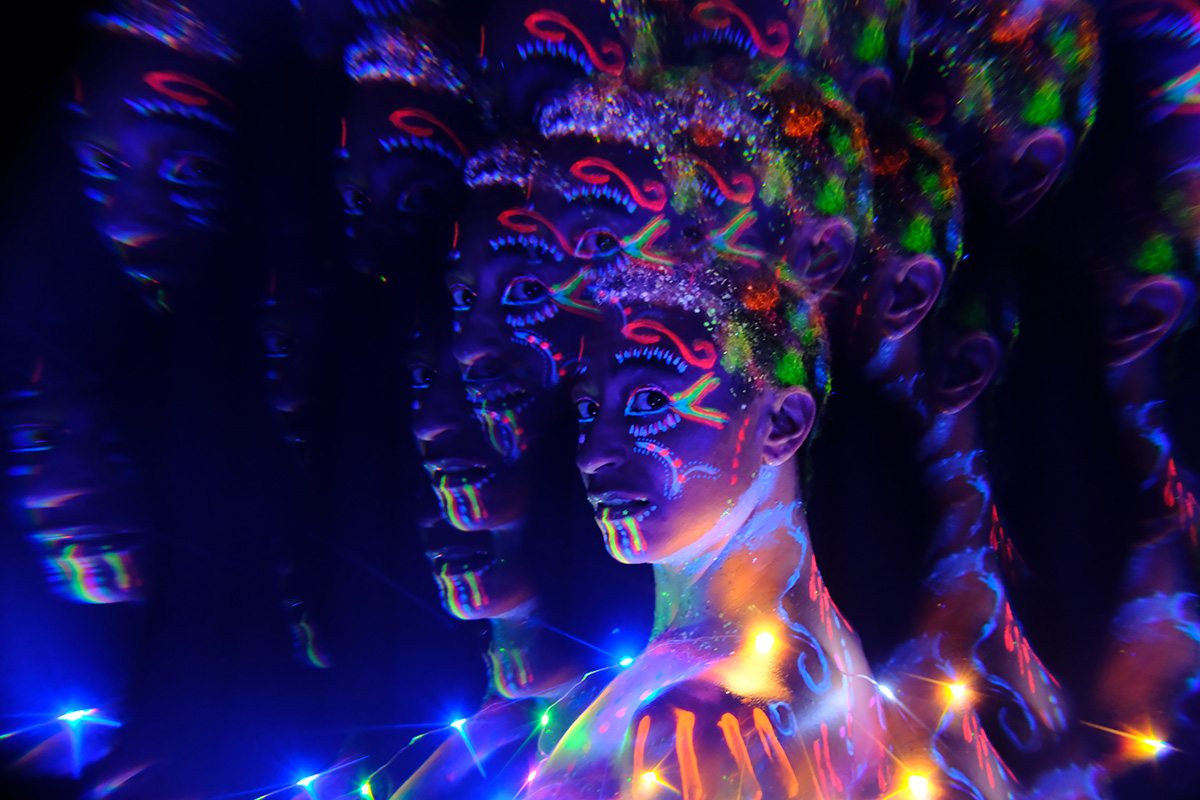
Amid the spate of anti-transgender legislation, the bullying of trans students and lack of gender-affirming care for young people across the country, photographer Gwen Andersen’s photo exhibit seeks to portray the trans and nonbinary community in a positive light.
Andersen’s “Becoming Ourselves” exhibit that documents trans and nonbinary people will be on display at the Bethesda United Church of Christ (10010 Fernwood Road) this summer.
Andersen spearheaded the exhibit along with the Rev. Dr. Jill McCrory from Bethesda UCC. The church paid for the project with a donation it received from Stevie Neal, a trans woman who passed away and left part of her estate to McCrory.
McCrory herself has been a pillar in the LGBTQ community for decades, including while pastor at Twinbrook Baptist Church.
The congregation that McCrory closed dispersed more than $1 million to various ministries and LGBTQ organizations, founded the MoCo Pride Center, and married a same-sex couple on the rainbow stage of Capital Pride in 2010. Bethesda UCC has also marked the Transgender Day of Remembrance, and hosted a renaming ceremony for a trans baptized member.
“I happen to have access to a wonderful transgender woman’s (Stevie) donation that she left me to do something for the transgender community,” said McCrory over a Zoom interview. “Andersen came to Rev. McCrory in November of 2023 with the idea. “Gwen knew Stevie. I thought this would be perfect because this is something that would benefit the transgender community.”
“WIthout Stevie, this surely would not have happened. And I say that with great confidence,” Andersen said in a Zoom interview.
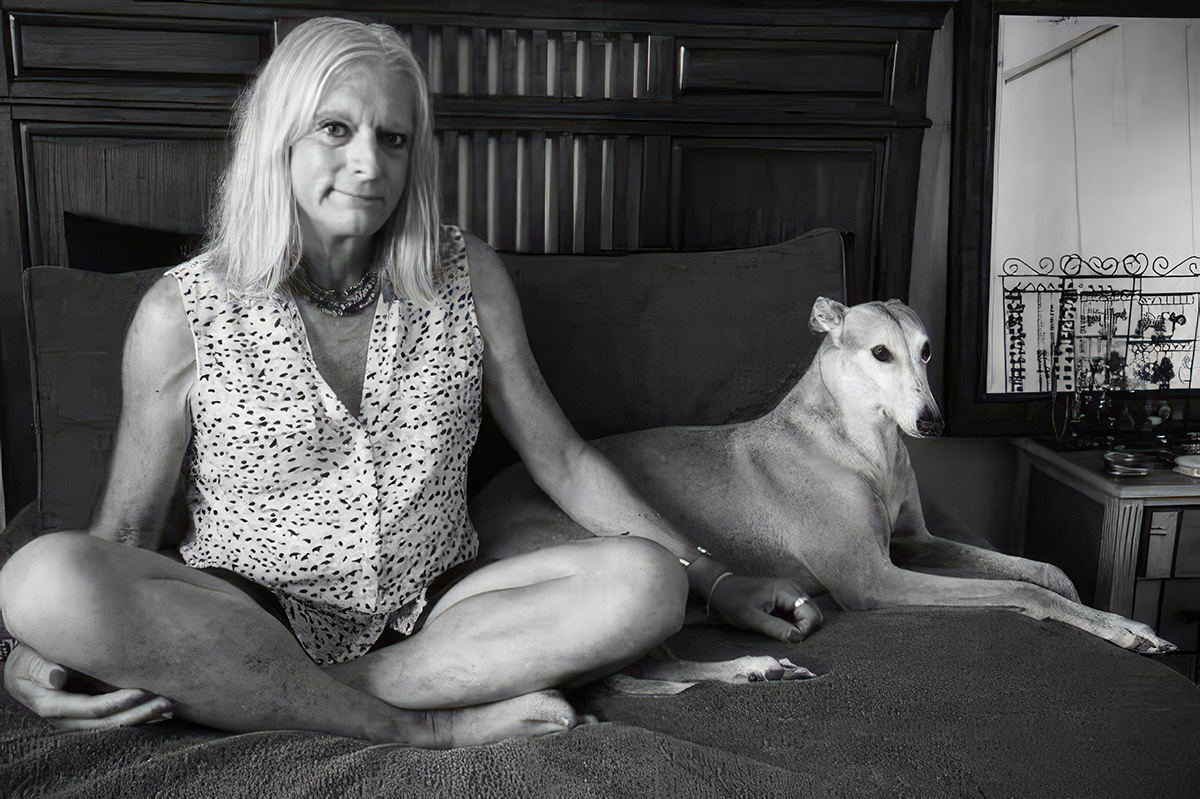
“Becoming Ourselves” debuted at the Unitarian Universalist Congregation of Rockville in March.
The exhibit features photos of trans and nonbinary people from across the country that Andersen and a number of other photographers took.
The photos feature people from all ages — from preteens to elders from all walks of life that include teachers, community leaders, and athletes. Andersen’s exhibit also showcases people who are proudly showing their top surgery scars. It also shows trans and nonbinary people in a variety of ways, from enjoying music, playing sports, and working.
The exhibit most importantly shows them being happy.
Anderson’s exhibit has two main goals: Give a space for trans and nonbinary people to see others in their community in a positive way, and to shift the narrative on how people see trans and nonbinary people.
“It was an emotional issue that won hearts and minds.” said Andersen in reference to the LGBTQ movement to legalize same-sex marriage. “I believe we will reduce the hostility against transgender people by winning hearts and minds.”
“One of the most effective messages is to protect trans kids,” she added. “Right now the hostility has not just gone against adults, it has gone against children, and children are being harassed, beaten up, and killing themselves. In much the same way as gays and lesbians were killing ourselves 30 years ago. I think what will be effective is tugging on hearts and minds and reclaiming the narrative from hate and fear, to love.”
Andersen wants to eventually get a more permanent location for the exhibit rather than bringing it to different venues. But until then, she plans to bring it to other churches that are interested in hosting it.
Anyone interested in supporting Andersen’s exhibit can log onto the “Becoming Ourselves” website, or directly help any of the photographers whose work is showcased. Andersen has directed folks to support photographer Liam Woods, whose online name is Analogue Papi.
Maryland
Moore pardons more than 175,000-plus cannabis-related convictions
Governor signed executive order at State House on Monday
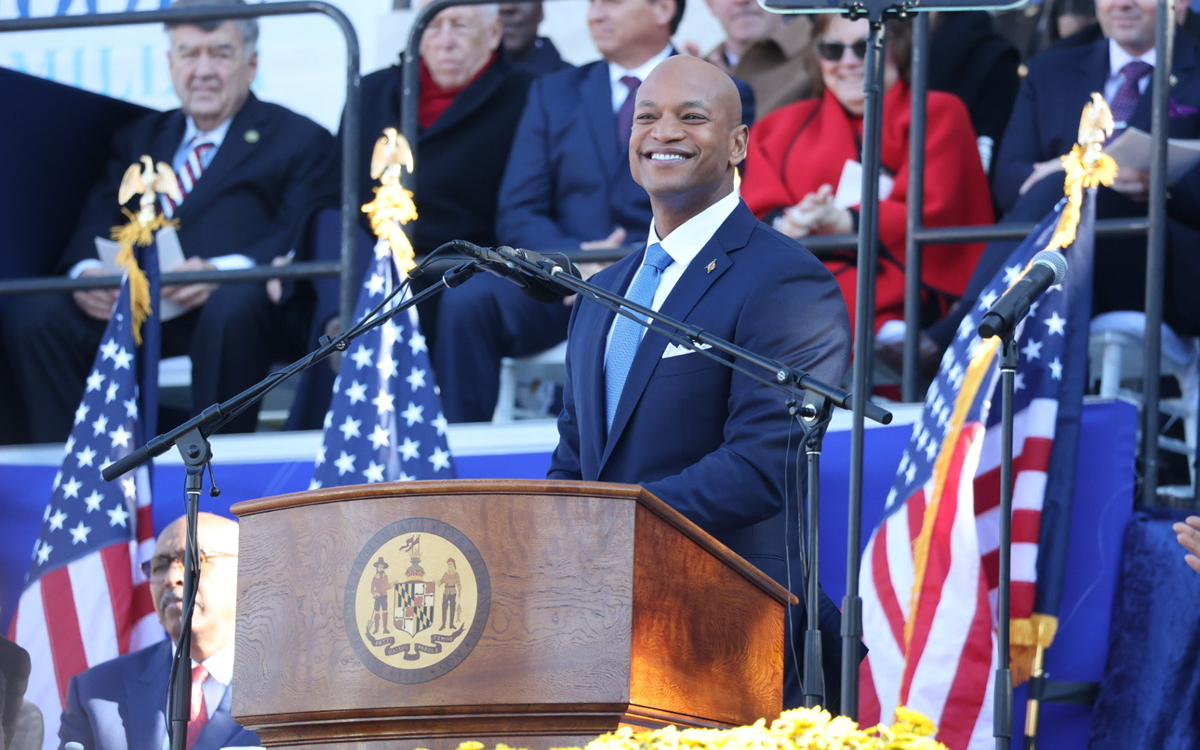
BY BRENDA WINTRODE and PAMELA WOOD | Gov. Wes Moore pardoned more than 175,000 cannabis-related convictions Monday, nullifying guilty verdicts decided when carrying small amounts of the drug or paraphernalia was illegal.
The Democratic governor signed an executive order during a State House ceremony, granting clemency to thousands of people convicted in Maryland. The convictions to be pardoned include more than 150,000 misdemeanors for simple possession and more than 18,000 for possession of drug paraphernalia with an intent to use.
The rest of this article can be read on the Baltimore Banner’s website.
Maryland
Silver Spring Pride sign rebuilt in memory of beloved neighbor
GoFundMe campaign has raised more than $4,000

Residents of Silver Spring’s Rosemary Hills neighborhood have come together to rebuild a Pride sign.
The sign was constructed in June 2020, and was meant to stay in place throughout Pride Month. Neighborhood residents, however, requested it stay up past its intended month-long display, and has remained in place for more than four years.
The sign spelling LOVE is at the neighborhood’s entrance between Sundale and Richmond Streets. It was made from plywood and the O was painted in the colors of the Pride flag.
“We wanted to take it down, but we just felt it was not ours anymore and belonged to the neighborhood.” Tony Brown told the Washington Blade during a telephone interview. “It was a positive thing for the neighborhood and began to take on a life of its own.”
Brown and his partner, Mike Heffner, designed the sign and said the Black Lives Matter movement inspired them to create it as a strong symbol of an accepting community.
The sign was vandalized numerous times last fall, resulting in neighborhood residents taking turns repairing it. Brown and his partner could not do the repairs themselves because Heffner was fighting Stage 4 lung cancer.
Heffner passed away on Oct. 6, 2023.
A GoFundMe page was set up to help raise funds for the replacement Pride sign, and it has raised more than $4,000. The replacement sign is more permanent and made of metal.
“I can’t speak for the neighborhood overall, but people who knew Mike I think are happy that we were able to honor his memory with this sign because this sign is so him,” Molly Chehak, a friend who lives next door to Brown, told the Blade. “He (Heffner) was an outgoing super social (person) who just made you feel good the way this sign does. It’s a perfect tribute to him.”
Chehak and other neighbors created the GoFundMe account.
Heffner’s family and his neighbors are still working to rebuild the Pride sign. It has become a memorial to Heffner.
“We wanted to do one that was clearly a Pride reference,” said Brown, noting the L is a fully painted Pride flag that spirals across the entire letter.
“For the O we wanted to do something reminiscent of times in the past, a throwback to the 60’s and 70’s so it’s a hippie montage of flowers and butterflies,” he said.
Brown described the V as being colorful, nonbinary people hugging each other with the idea that love is more than what one may see.
“During COVID, he had started painting rocks and putting kind and fun messages on them leaving them around places as sort of a pay it forward Karma and so the E is basically that stylized writing and to embrace a bunch of ways we embrace love,” he said.
The final letter had the phrase “love is love” written repeatedly in various handwritings to pay homage to Heffner and what he did for his neighborhood during the pandemic. Brown’s four daughters — one of whom is a professional artist — and their friends designed it.
The landscape around the sign has also been transformed with rocks that honors Heffner’s love for Rosemary Hills and his passion for rocks.
Chehak also said Heffner always wanted a bench, and neighbors are looking to install one soon next to the Pride sign.
-
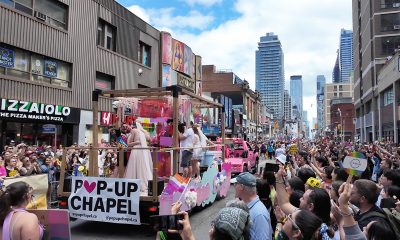
 Canada1 day ago
Canada1 day agoToronto Pride parade cancelled after pro-Palestinian protesters disrupt it
-

 Politics5 days ago
Politics5 days agoLGBTQ issues absent from Trump-Biden debate
-
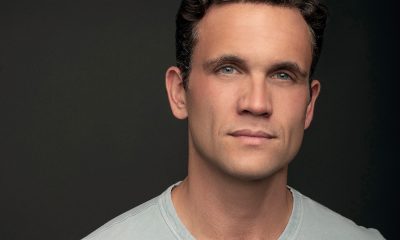
 Theater4 days ago
Theater4 days agoStephen Mark Lukas makes sublime turn in ‘Funny Girl’
-
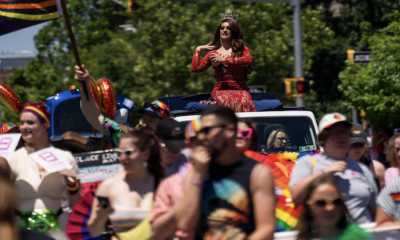
 Baltimore3 days ago
Baltimore3 days agoDespite record crowds, Baltimore Pride’s LGBTQ critics say organizers dropped the ball

